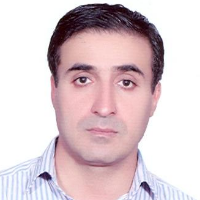Application of Fuzzy Inference System in Measurement of Human Development
Case Study: Parsabad City
Author(s):
Abstract:
This study aims to evaluate the human development in the city of Pars Abad (including Pars Abad, Aslan Dooz, Islam Abad and Taze kand) based on some human development indicators, to identify the rate and the causes of inequalities in this city, to introduce possible solutions for facilitating planning, and ultimately, to reduce human non-development rate in the region. It is an applied -developmental research using descriptive- analytical method. It also uses the Fuzzy Inference System (FIS) model in MATLAB. In this research, 40 reduced indicators are divided into two factors, social development (including employment, health, and social services), and cultural development (including education, cultural factors and social deviations) in a specified period, 2011. The analysis of all research stages, in particular, defining indices, selecting relevant membership functions, forming a database, establishing rules and ultimately getting output from the date was done in MATLAB. After analysis of the data by this model, the obtained results showed that FIS model, relying on knowledge base and its corresponding stepwise conclusions, is a good model for describing the details of the primary and secondary indicators as well as human development. Likewise, it showed that among the towns of this city, there are significant differences in terms of its human development indicators, whether in the city or in relation with other towns. Except the capital city of Pars Abad with a final weight of 0.507, which is located in the semi- deprived category, other towns of this city are considered in deprived areas.
Keywords:
Language:
Persian
Published:
Geography and Territorial Spatial Arrangement, Volume:6 Issue: 19, 2016
Pages:
1 to 16
https://www.magiran.com/p1551764
سامانه نویسندگان
مقالات دیگری از این نویسنده (گان)
-
Identification and analysis of the factors affecting in the physical-spatial transformations of the peri-urban areas of Ardabil with an emphasis on the political economy of space
Bahram Imani *,
Journal of Urban Peripheral Development, -
The interaction of the architecture of Asbad of Varmal settlement with the characteristics of the natural environment in terms of orientation with the 120-day winds of Sistan
Naghmeh Behboodi*,
Housing And Rural Environment, -
Application of the Actant-Network Theory of Bruno Latour in Reading the Concept of Space
Hossein Hataminejad *, Ahmad Pourahmad, Saeed Zanganeh Shahraki,
spatial planing, -
تحلیل شاخص های کیفیت زندگی مبتنی بر اصول شهر زیست پذیر (مطالعه موردی: شهر لامرد)
*، فرضعلی سالاری سردری
نشریه جغرافیا و برنامه ریزی شهری چشم انداز زاگرس، بهار 1401




